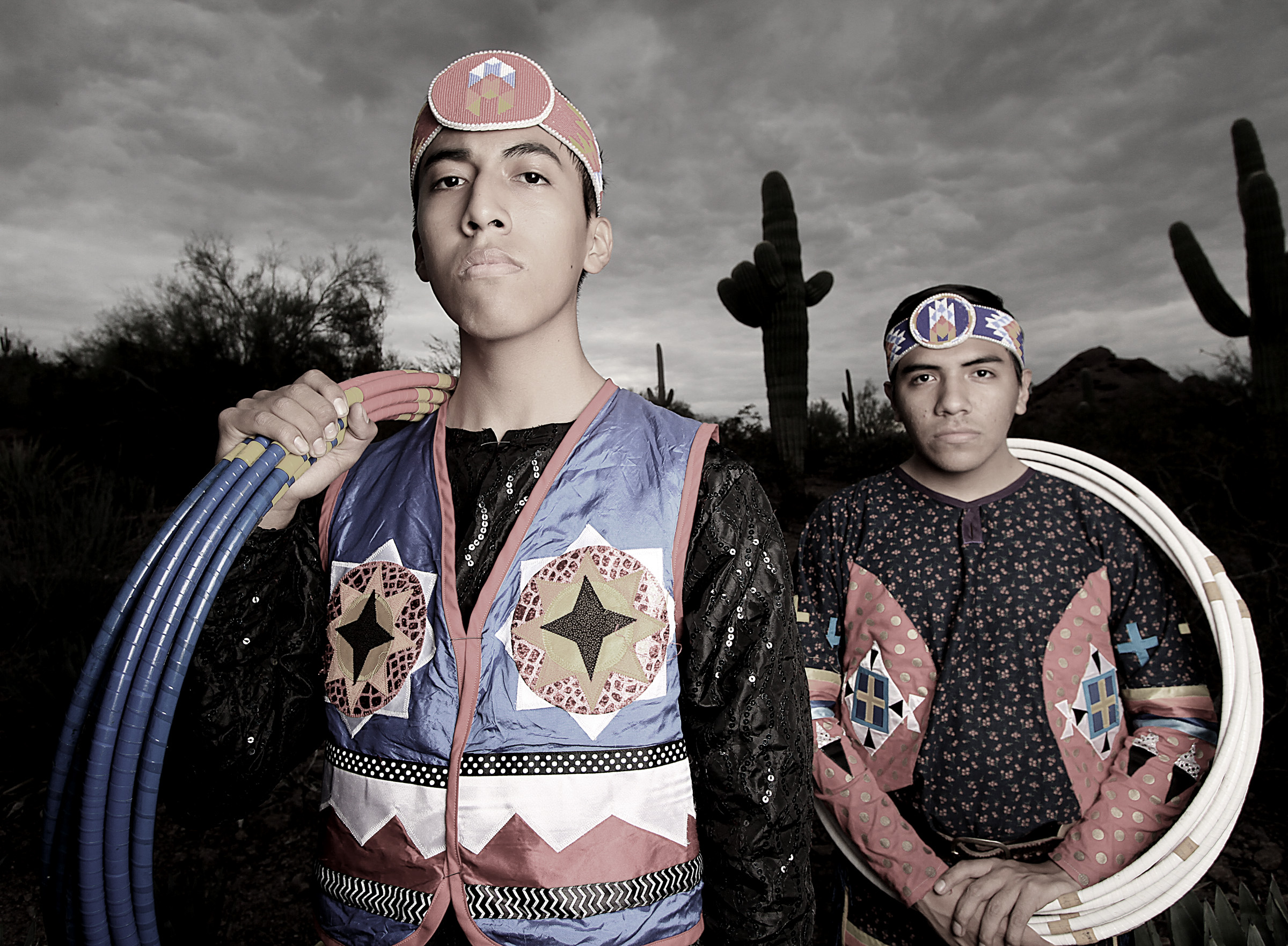It was with a $35,000 Kickstarter campaign two years ago that Capitol Hill photographer Matika Wilbur, a member of the Tulalip and Swinomish tribes, began driving. And driving. And driving. Eighty thousand miles later, her quest is represented by the 50-odd portraits in her first solo museum show, Photographic Presence and Contemporary Indians: Matika Wilbur’s Project 562.
Her ongoing goal is to portray members from each federally recognized tribe in the U.S.—now 566 of them; the number grew after she named and conceived the project, which is about one-third completed. Wilbur has secured national press recognition for her photo series (in The New York Times, NPR, and elsewhere), which is also well documented on her website, project562.com.
As she explained to us journalists tailing her through the Tacoma Art Museum last month before the show’s opening, “Imagery matters, representation matters” when it comes to depicting Native Americans. She cheerfully dismisses the old “leathered and feathered” cliches, though her images are frankly meant to inspire. The question, she asks rhetorically, is “How do we lift our people up?”
Bubbly and effusive while leading our tour, Wilbur wants to comment on every portrait in the show, to tell everyone’s story. “She’s fierce,” she says of one attorney. “I didn’t realize there’s so many cool Indians out there!” she exclaims. Everything is rad, cool, or awesome to Wilbur, and it’s impossible not to be swept along by her enthusiasm. This, too, must be how she gains her portrait-sitters’ trust; each session takes several hours of discussion, and Wilbur also conducts audio interviews with her subjects. Some of these you can hear on TAM’s loaner mp3 players, which accompany selected images. Four companion videos have also been created by Deidra Peaches, who accompanied Wilbur on some of her photo-gathering trips. (These followed a second Kickstarter campaign exceeding $200,000, with many more people betting on her success.)
Wilbur’s road trips weren’t taken according to some strict geographic plan; there are no maps here to help track her travels, and her photos aren’t grouped by region or theme. “Matika’s not a linear person,” laughs TAM’s Rock Hushka, who curated the show.
all photos by Matika WilburMost of Wilbur’s images are made from traditional silver prints, with faint colors added by hand; a few are digital, with the colors dialed down to near sepia tone. Faces have precedence over place; Wilbur crops out most of the backgrounds. There aren’t any towering mesas or totem poles, though some tokens of Indian life are familiar to Northwest eyes: Here a Lummi elder poses with two carved canoes; elsewhere, a Tulalip trio wears traditionally embroidered ponchos. Most everyone’s posed outside, often gazing into the distance.
Wilbur’s portraits reflect the preferred self-image of her subjects: If they want to wear traditional costumes, fine; if they favor golf shirts and baseball caps, that’s also fine. “I asked people to wear what they liked to wear,” she says. “They posed where they wanted to pose. I let them choose.” For that reason, no one here is portrayed in a dirty T-shirt working on the car in their driveway, or doing dishes or surfing the Internet. Wilbur aims to capture each individual—most are photographed separately, a few in groups—at their dignified best. It’s an idealized, ennobling view that, in a 566-page book, would become repetitious. There’s a danger here of trading negative stereotypes for positive.
This small commendable show is but a preview of Wilbur’s grand project, which naturally recalls the epic North American Indian photographic series undertaken by Seattle’s Edward S. Curtis from 1907–30. (That was chronicled in Timothy Egan’s recent book Short Nights of the Shadow Catcher.) The crucial difference, of course, is that Project 562 comes from an insider’s perspective. For Curtis, though a sympathetic artist/entrepreneur, the Indian was a romantic, idealized Other, symbol of a past golden age. For Wilbur, these tribespeople in the Southwest, Plains states, and even Hawaii are her living, breathing cousins, fellow members of the now. She’s one of them, albeit generally a short-term visitor just driving through.
For TAM, this exhibit is an important milestone. It’s by a young, female artist. It carries an implicit political and socioeconomic critique of our mistreatment of Native Americans (a point also raised during President Obama’s recent visit to the Standing Rock Sioux Reservation in the Dakotas, where poverty, alcoholism, and disease are sadly pervasive). And though her show won’t overlap with the November opening of TAM’s new Haub Family Gallery, Wilbur’s exhibit feels like something of a preface, if not an inoculation, to that $15 million museum wing and collection, donated by the German industrialist collectors.
The Haubs mostly favored romantic-sentimental depictions of the Old West: Indians posed in war bonnets on horseback, situated in scenic landscapes, very much fixtures of the past (if not quite wooden Indians). Wilbur—in person and in her work—is a vivid reminder of how Indians live now, with Instagram and smartphones, listening to hip-hop or Shostakovich, going to med school, raising cattle, fighting in Afghanistan, or trying to forge a career in art. Art museums generally favor the historical, with Indians neatly framed by the codes of yore. In this welcome incursion from the present, says Wilbur, “You will not be able to deny we’re still here.”
bmiller@seattleweekly.com
TACOMA ART MUSEUM 1701 Pacific Ave., 253-272-4258, tacomaartmuseum.org. $8–$10. 10 a.m.–5 p.m. Wed.–Sun. Ends. Oct. 5.








